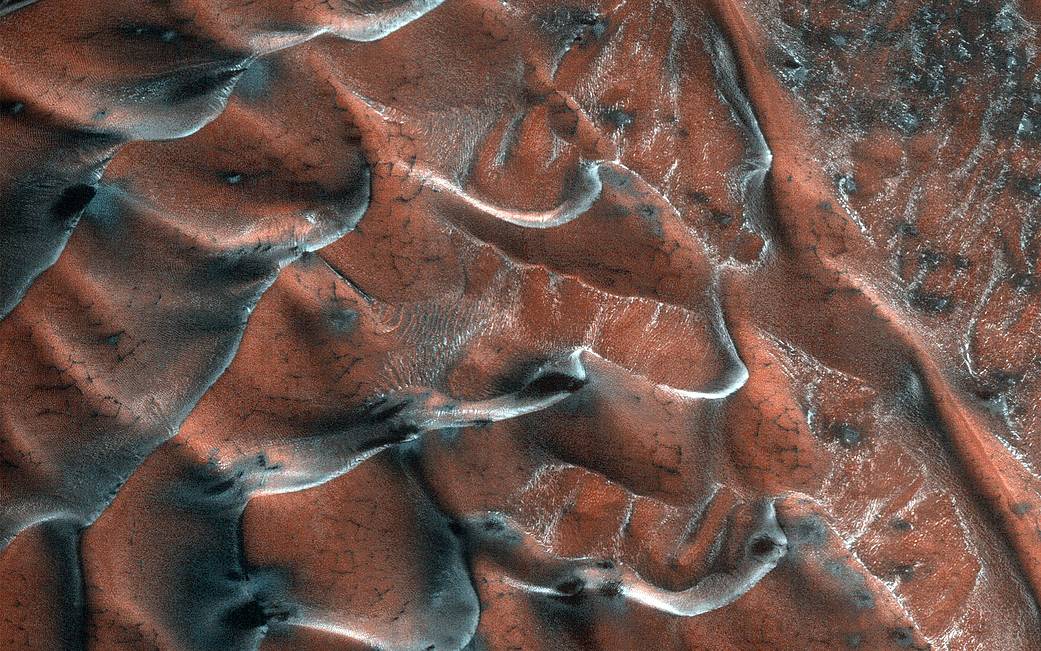A field of sand dunes occupies this frosty 5-kilometer diameter crater in the high-latitudes of the northern plains of Mars. Some dunes have separated from the main field and appear to be climbing up the crater slope along a gully-like form.
The surface of the main dune field is characterized by a series of dark-toned polygonal patterns. These may be the result of seasonal frost processes. Several of the steeper dune slopes, pointing in the downwind direction, host narrow furrows suggesting the start of gully formation.
The crater floor contains a variety of textures, including lobate and striped patterns that indicate seasonal thaw caused by sublimating ice. Broad downslope movement of materials on the crater slopes opposite the dune field superficially resemble gullies, except that they are generally not defined by distinctive alcoves, incised channels, or sediment aprons. These are the hallmarks of gullies elsewhere on the planet.
Image Credit: NASA/JPL-Caltech/University of Arizona
一片沙丘占据了火星北部平原高纬度地区这个直径5公里的冰冻陨石坑。一些沙丘已经从主沙场中分离出来,似乎正沿着沟壑状的形态爬上陨石坑斜坡。
主沙丘场的表面有一系列深色调的多边形图案。这些可能是季节性霜冻过程的结果。指向下风方向的几个陡峭的沙丘斜坡上有狭窄的沟壑,表明沟壑形成的开始。
陨石坑底部有各种各样的纹理,包括叶状和条纹状的图案,表明了由冰升华引起的季节性融化。在沙丘田对面的陨石坑斜坡上,物质的广泛下坡运动表面上类似于沟壑,但它们通常没有明显的凹室、沟槽或沉积圈。这些都是地球上其他地方沟壑的标志。
图片来源: NASA/喷气推进实验室-加州理工学院/亚利桑那大学



